A hoover for goose droppings, a tree-planting battle with the Hilton, and a disgusting banana: Inside Buckingham Palace and its gardens
The summer tours of The King’s residence this year include two new state rooms and a peep inside his private gardens.

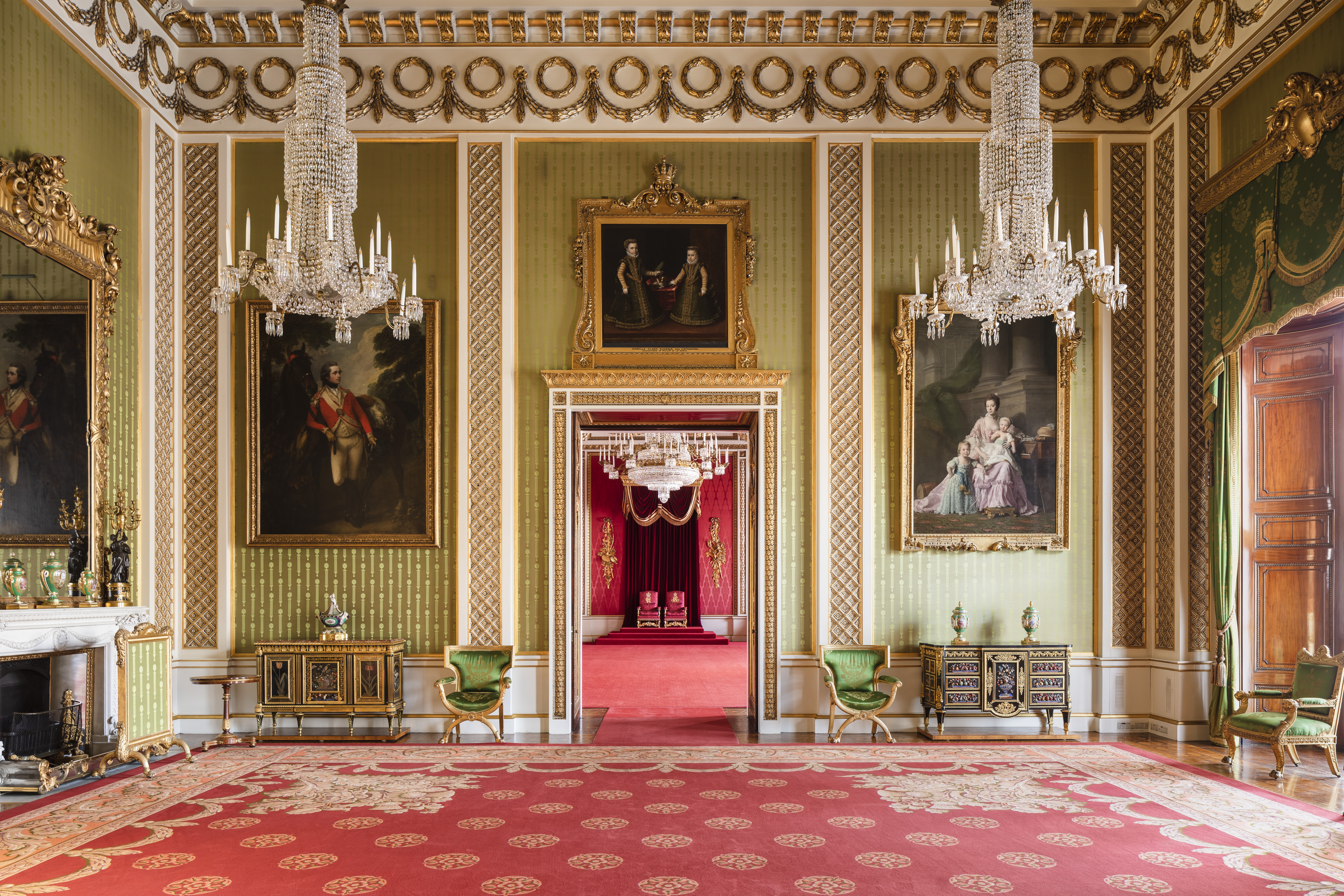
‘It brings out the worst in you, Buckingham Palace,’ Sir Ian McKellen recalled, while appearing as a guest on the Graham Norton Show in 2018. ‘It was a very posh occasion,’ the actor remembered, ‘the banquet was over and you were free to go around… so Judi [Dench] and I went along the corridor into what we both felt was a vaguely familiar room.’ The room that they had found themselves in, it turned out, was one they had both been in before, when receiving their damehood and knighthood. In the throne room, they spied their objects of desire and — acting very much on the mantra ‘You Only Live Once’ — plonked their backsides down on top of them. After they had sat in the thrones of the monarchs, Ian ‘had a fag’ on the royal balcony. What a man. In one of his memoirs, Stephen Fry revealed that he had one-upped his fellow actor when he admitted to taking cocaine while at the palace. No such inappropriate antics on my recent visit, I am sorry to report.
I was there to visit the palace’s magnificent state rooms, which are open to visitors in some of the summer months each year through the Royal Collection Trust. This year, they are open until September 28 and the addition of two new rooms — the 1884 Room and the Carnarvon Room — make the guided tour even more desirable. This has, unsurprisingly, been a big draw among visitors. But not as big of a draw as the other addition, a small-group in-person Garden Highlights Tour, where you can see parts of The King’s gardens, which are usually closed to the general public.
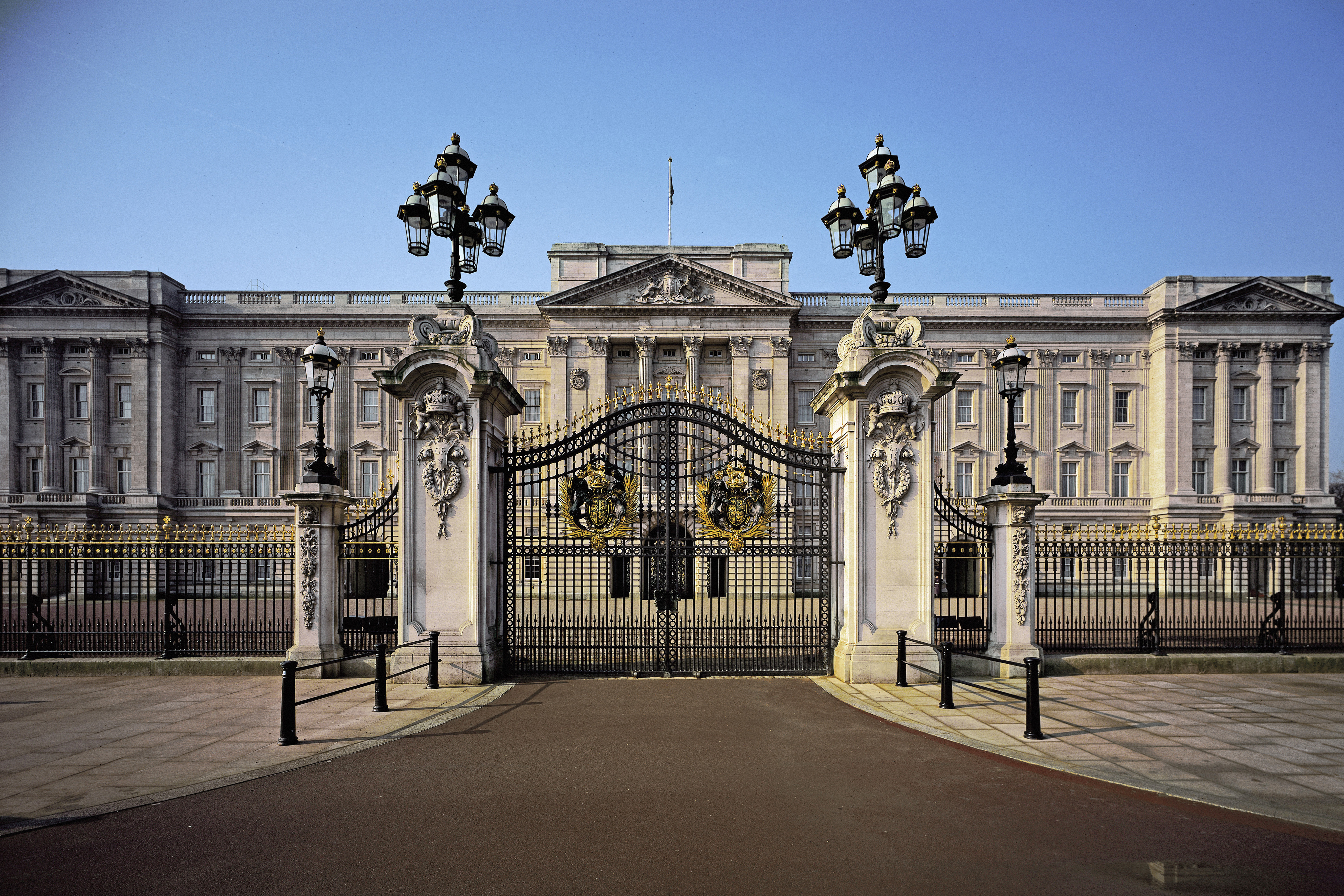
The tour begins in The Quadrangle, which I eventually reach after battling my way through the usual swarm of tourists that crowd outside the palace’s front, desperate to see if the guardsmen really do stand as still as people say. Construction of The Quadrangle (then just a U-shaped palace) began in 1847, overseen by the architect John Nash; you’ll recognise this area as it’s where many famous faces and heads of state have been photographed. The Australian State Coach, which was presented to Elizabeth II in 1988 as an official gift on the Australian Bicentennial, and first used that same year by the Queen at the State Opening of Parliament, is also on display.
Next up was The Grand Hall, but not before we were offered the chance to buy an official Buckingham Palace bottle of water for £4.50. Inside, there were thickly-patterned red carpets, and the hall was filled with sculptures, many of fairies, some of nymphs. All of them were naked. A sculpture of Psyche, lamenting the loss of Cupid, made in 1847 by William Thread, was a particular stand out. Most of these were collected by Queen Victoria and Prince Albert throughout their reign. The portraits of the two monarchs watched over, as if daring the bravest of tourists to sneak a peek under one of the statue’s artfully placed fig leaves.
The next room we visited was the Grand Staircase, which really was the highlight of the State Rooms — sort of like the Great Hall would be in a tour of Hogwarts. Another of Nash’s creations, it really felt like stepping into a grander, much more majestic age, probably due to the fact that it was designed by the architect after he had worked in many of London’s theatres. The theatrical element is only added to by the large full-length mirror that greets you on the staircase, allowing you to imagine yourself as another of the many regal portraits hanging on the wall — were it not for the clunky headset complete with nine languages in place of a crown.
We carried on through the East Gallery and into the Ballroom, which was lit with numerous chandeliers. It currently features an exhibition of The King’s Tour Artists, displaying works made on his travels since 1985 by his accompanying creatives. A four-course dinner is usually held here for guests, the guide informs us, before debunking the myth that when the monarch finishes eating, so must everyone else. Nope. Something far weirder actually happens at the palace — 12 pipers enter the ballroom and circle the table three times playing very loudly and that is your cue to finish your meal and retire to the next room.
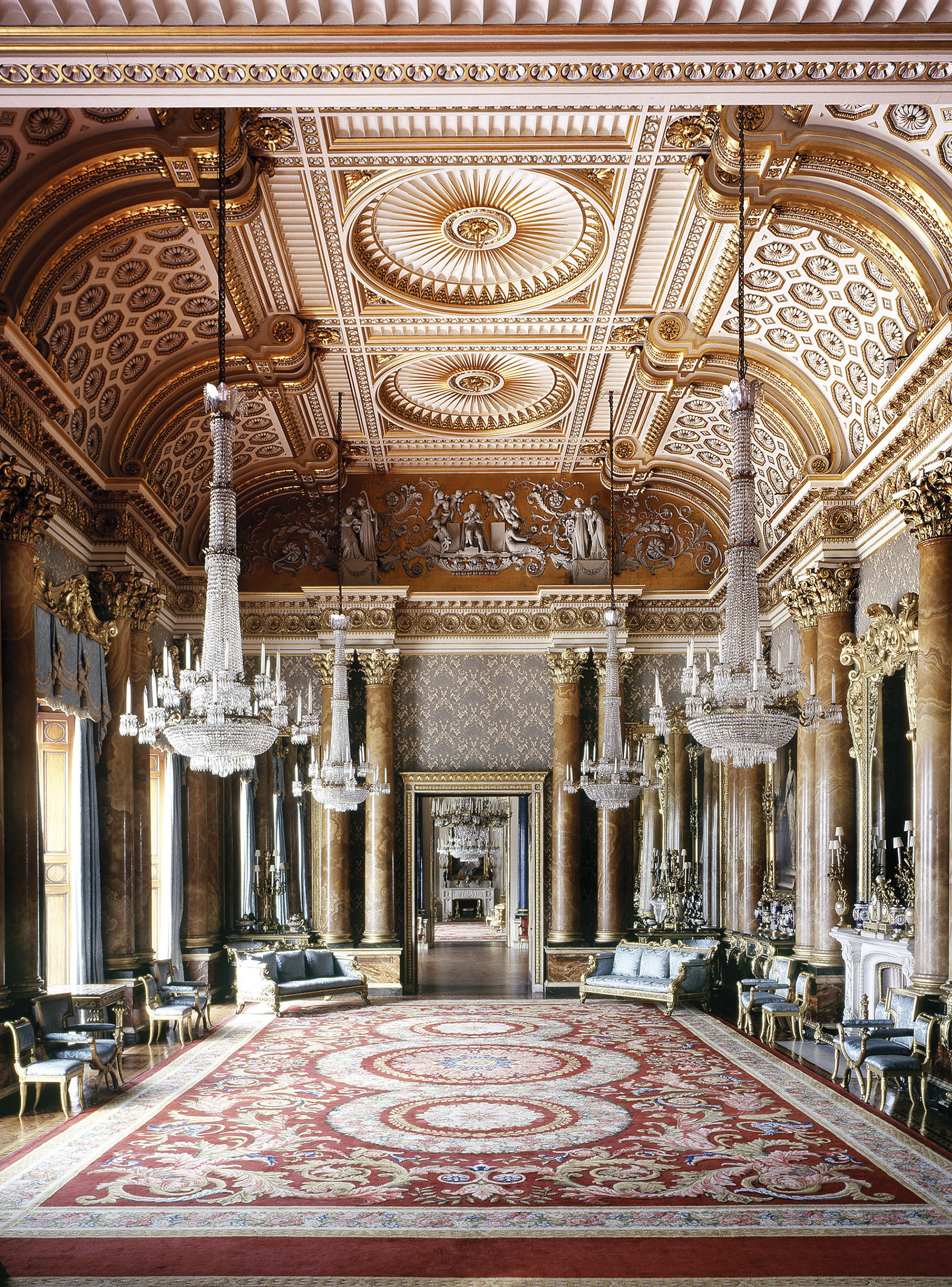

Over the past two centuries, the room has had many uses: from the setting for spectacular balls in the reign of Queen Victoria to Investitures held by King George V.
The West Gallery and Cross Gallery come next, although the State Dining Room, Blue Drawing Room (above) and Music Room are closed, and part of the Bow Room is shut off too. This is because the palace is finally updating the cabling plumbing and heating that haven't been touched since the 1950s, a project that has taken eight years so far, still has two more to go, and it is seen by everyone as something that definitely should have happened before now.
Exquisite houses, the beauty of Nature, and how to get the most from your life, straight to your inbox.
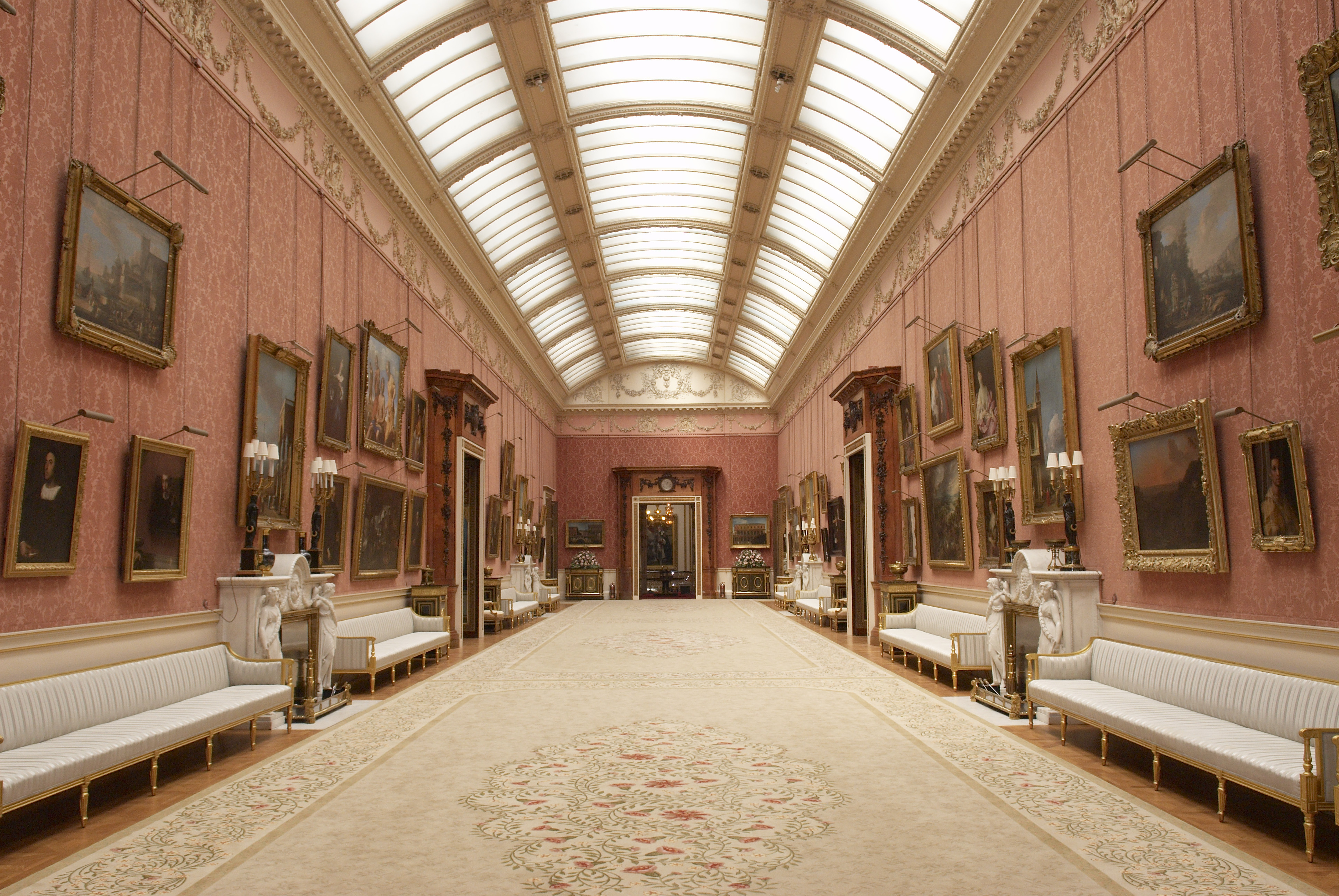
We then visit a marvellous picture gallery (above) created for George IV — which is the oldest part of the palace — followed by the Green Drawing Room and The Throne Room, where the official state portraits of The King and Queen hang. Afterwards we pass through the Picture Gallery, the White Drawing Room (which has a hidden door behind a mirror, allowing for seamless entrances and escapes by members of the Royal Family back to their lodgings) and the long awaited 1844 room — nice enough, but really just another royal room.
The tour itself was enjoyable, but a tad underwhelming. I imagine the majesty of the palace really comes from visiting as a guest and being welcoming with all the pomp and grandeur your surroundings demand — not from plodding through with 101 other tourists wearing scuffed trainers and dripping water from the contractable umbrellas dangling from their wrists.
The garden tour was much more enjoyable. Trudging through puddles in the middle of August in its 39 acres felt incredibly British. It’s the largest private garden in London, Jan, our tour guide, told us, as we wandered down an Indian Chestnut avenue that was planted in the 1960s to stop the nearby Hilton advertising ‘rooms with a view of Buckingham Palace’. These particular trees were chosen by Elizabeth II for their lack of spikes on the chestnuts, concerned as she was for the precious paws of her beloved corgis. The gardeners even have ‘a special hoover’ for picking goose droppings off the ground ahead of royal visitors, Jan says. Such is the attention to detail, which is no wonder given The King’s keen eye, and specific demands, when it comes to his gardens.
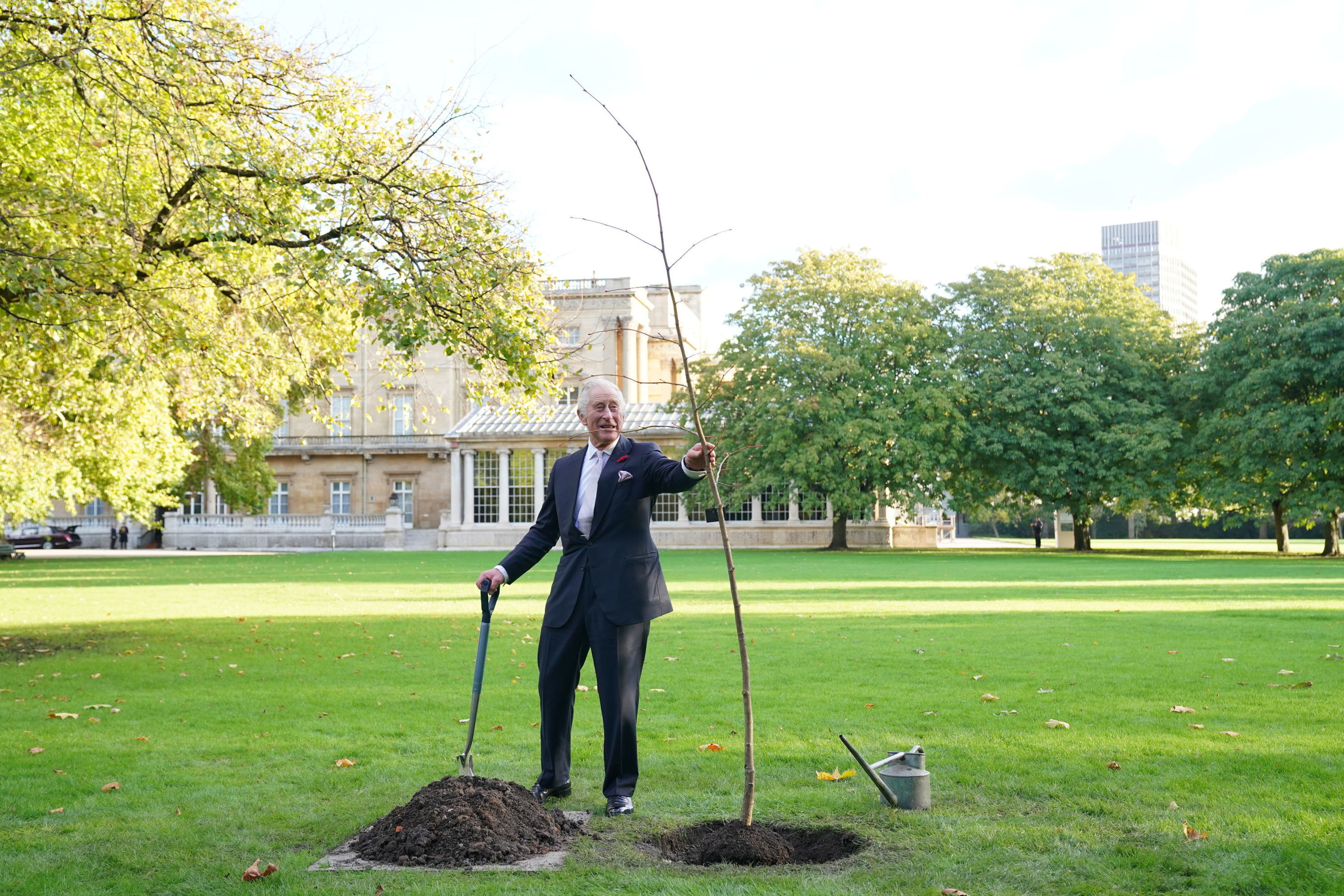
The King plants a lime tree near the Tea House in the Buckingham Palace gardens, for the Queen's Green Canopy initiative.
The King’s entrance to the garden from his North Wing is flanked by two large trees planted by Victoria and Albert and affectionately known as ‘Vicky and Alby’ by the gardeners. Their branches are intertwined with one another's, suggesting a love that has outlasted death, or perhaps just that this is what trees planted close to one another tend to do. Lombardy poplars stand not far away, directly in the sightline of that pesky hotel, shielding The King’s apartments, making the score Buckingham Palace 2, Hilton 0.
One of the longest herbaceous borders in Europe surrounds the edge of the garden, featuring around 200 different perennials allowing for flowering from May to October. Banana and ginger polenta plants grow here as it’s in the south of the garden and sheltered by the wall. The former have been known to produce, in their time, a singular banana ‘which apparently tasted disgusting’. Delphiniums, The King's favourite, also grow here.
We follow along the serpentine path (designed so that you can’t see where you’ve come from or where you’re going next in order to engender a sense of surprise) and come next to a delicate tea house, and shortly after that the Rose Garden. Each bed contains 60 of the same rose and no bed contains more than one colour, such are the royal rules, we are told. This excludes, however, one flower bed, which was a present for Elizabeth II and Philip’s 50th wedding anniversary. Three blooms from here were included in her funeral wreath. Adorably, one rose in the garden is called ‘Orange Marmalade’ in honour of when Paddington Bear came to visit her majesty earlier that year, in some of her final months.
As our tour progresses, we follow alongside some bay trees (used to make the Buckingham Palace Gin). Hyde Park Corner stands on the other side of the wall as we approach the royal tennis court, available for the Royal Family and members of staff to use. As we carry on, we come across the lake, which has two islands in the middle — one accessible by boat, the other by bridge. Italian honey bees live there now and the only people allowed on the islands are the head gardener, the bee keeper and The King.
They produce about 160 pots of honey a year, Jan tells us, enough to use in the royal kitchen and to give the leftovers as diplomatic gifts. Pope Francis apparently wrote asking for another pot after his visit, such was its deliciousness. He was politely declined, Jan says, with a smile, as she wraps up our tour, and sends us back into the real world, where goose droppings remain unhoovered, and there are no rose beds named, specifically, after a little bear’s fondness of marmalade sandwiches.
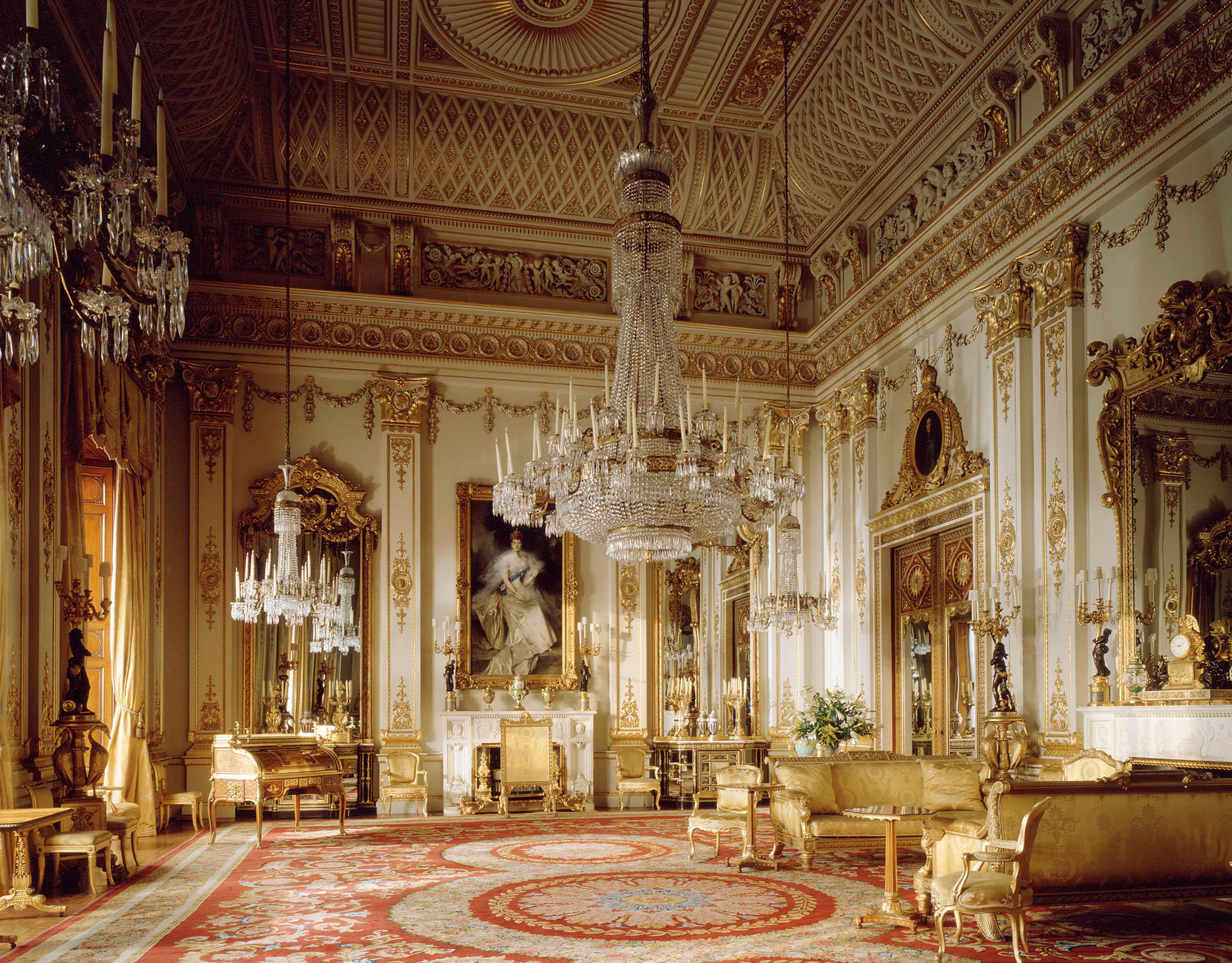
One of the more intimate State Rooms at Buckingham Palace, the White Drawing Room is regularly used for audiences and small gatherings.
Lotte is Country Life's digital writer. Before joining in 2025, she was checking commas and writing news headlines for The Times and The Sunday Times as a sub-editor. She has written for The Times, New Statesman, The Fence and Spectator World. She pens Country Life Online's arts and culture interview series, Consuming Passions.
